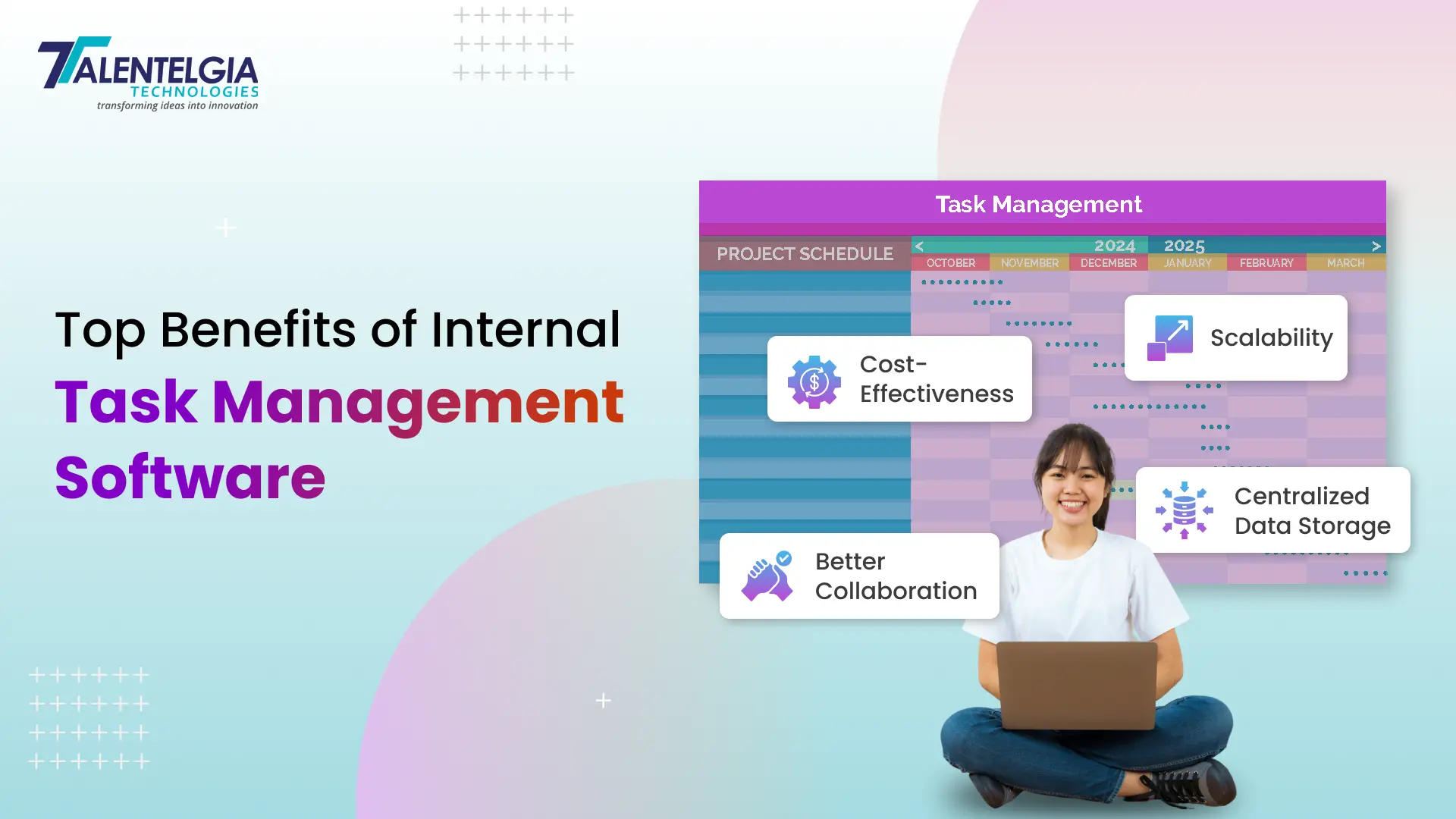Do you dream of launching your own software startup? Do you have a passion for solving problems and creating value with technology? Do you want to be your own boss and make a positive impact on the world? Many aspiring entrepreneurs share the same vision and ambition. However, there is one thing that often stops them from pursuing their goals: finding a good software idea.
Finding a good software idea is not easy. It requires a lot of creativity, research, validation and testing. It also requires a lot of courage, persistence and resilience. You may have to face many challenges, uncertainties and failures along the way.
But don’t let that discourage you. Finding a good software idea is not impossible. In fact, there are many ways to find inspiration and generate ideas for your software startup.
Every successful startup begins with a brilliant idea. Finding that million-dollar software idea can be an exhilarating journey, filled with possibilities and potential.
In this blog post, we will share with you 8 tips for finding your million dollar software idea. We will also answer some frequently asked questions for aspiring software entrepreneurs.
8 Tips for Aspiring Entrepreneurs
1. Look for Pain Points in Industries You Know Well
One of the most effective ways to identify a software idea with great potential is by looking for pain points in industries you are familiar with. Drawing from your expertise and experience, analyze the challenges and inefficiencies that businesses face.
By addressing these pain points with a custom software solution, you can provide value and attract a significant customer base.
2. Pay Attention to New or Emerging Technologies
Technology is constantly evolving, and keeping a close eye on new or emerging technologies can be a source of inspiration. Stay updated with the latest trends, advancements, and disruptive technologies that have the potential to revolutionize industries.
By harnessing the power of cutting-edge technologies, you can create innovative software solutions that cater to the evolving needs of businesses and consumers.
3. Identify Opportunities in Growing Markets
Finding a software idea in a growing market can be a recipe for success. Research and analyze industries that are experiencing rapid growth and have untapped potential.
By developing a custom software solution that addresses the specific needs of these markets, you can position your startup for long-term success and profitability.
4. Notice When Customer Needs Are Not Being Met
Customers are at the heart of any successful business. Pay close attention to their needs and frustrations. Identify gaps in the market where existing solutions fail to meet customer expectations.
By creating a custom software solution that addresses these unmet needs, you can differentiate your startup and capture a significant market share.
5. Find Ways to Improve Existing Products or Services
Innovation doesn’t always mean reinventing the wheel. Sometimes, improving upon existing products or services can lead to groundbreaking software ideas. Analyze the strengths and weaknesses of existing solutions in the market.
Identify areas where you can add value, enhance functionality, or provide a better user experience. By building a custom software solution that offers unique advantages, you can disrupt the market and gain a competitive edge.
6. Keep an Open and Inquisitive Mindset
Innovation can come from unexpected sources. Cultivate an open and inquisitive mindset that encourages curiosity and exploration.
Embrace a continuous learning approach, stay curious about new ideas, and challenge conventional thinking. By fostering a mindset of innovation, you can uncover unique software ideas that have the potential to transform industries.
7. Talk to People in Various Roles and Positions
Engaging in conversations with people from diverse roles and positions can provide valuable insights.
Talk to industry experts, entrepreneurs, potential customers, and even your target audience. Seek their feedback, understand their pain points, and gain a deeper understanding of the challenges they face. These conversations can spark new ideas and help you refine your software concept.
8. Look for Crossover Opportunities Between Industries
Innovation often occurs at the intersection of different industries. Look for crossover opportunities where you can leverage ideas and concepts from one industry to create a breakthrough software solution in another. By combining knowledge and best practices from multiple industries, you can create a unique offering that disrupts the market and captures attention.
Find Your Inspiration: FAQs for Aspiring Software Entrepreneurs
To further inspire aspiring software entrepreneurs, here are some frequently asked questions:
- How can I protect my software idea?
A. Protecting your software idea involves taking certain measures to safeguard your intellectual property. Here are a few common ways to protect your software idea:
- Non-Disclosure Agreements (NDAs): Use NDAs when sharing your idea with potential partners, investors, or developers to ensure confidentiality.
- Copyright: Copyright your software code and any original content associated with your software.
- Trademarks: Consider trademarking your software name or logo to protect your brand identity.
- Patents: In some cases, you may explore obtaining a patent for a unique software invention, although this can be a complex and costly process.
- What are the key factors to consider when building a minimum viable product (MVP)?
A.When building an MVP, it’s essential to focus on the core features that demonstrate the value of your software idea. Here are some key factors to consider:
- Identify the problem: Clearly define the problem your software aims to solve and ensure your MVP addresses it effectively.
- Minimalism: Keep your MVP minimalistic by including only the essential features that provide value to your target users.
- User feedback: Gather feedback from early adopters and iterate on your MVP based on their input.
- Scalability: Design your MVP with scalability in mind, ensuring it can accommodate future growth and additional features.
- How do I validate my software idea in the market?
A. Validating your software idea in the market involves assessing its viability and market fit. Here are some steps to help you validate your software idea:
- Market research: Conduct thorough market research to understand your target audience, competitors, and existing solutions.
- MVP testing: Build and release an MVP to a select group of users and gather feedback to assess the market response.
- User feedback: Listen to your users and analyze their feedback to determine if your software idea meets their needs and solves their pain points.
- Iteration: Based on user feedback, iterate and improve your software idea to better align with market demands.
- What are the essential steps for successful software product development?
A.Successful software product development involves several key steps. Here are some essential steps to consider:
- Requirements gathering: Clearly define the objectives, functionalities, and user requirements for your software product.
- Design and prototyping: Create wireframes, design the user interface, and develop interactive prototypes to visualize your software product.
- Development: Write clean and efficient code to bring your software product to life, following best practices and industry standards.
- Testing and quality assurance: Conduct thorough testing to ensure your software product functions as intended and meets quality standards.
- Deployment and launch: Prepare for the deployment of your software product, including setting up hosting, infrastructure, and necessary configurations.
- Maintenance and updates: Continuously maintain and update your software product to address bugs, add new features, and improve performance.
- How can I attract investors for my startup?
A. Attracting investors for your startup requires a compelling pitch and a solid business plan. Here are some strategies to attract investors:
- Prepare a detailed business plan: Clearly articulate your software idea, target market, revenue model, and growth projections in a comprehensive business plan.
- Develop a compelling pitch: Craft a persuasive pitch that highlights the unique value proposition of your software product and its potential for success.
- Network with investors: Attend industry events, join startup communities, and actively network with potential investors.
- Demonstrate traction: Show evidence of market validation, user adoption, revenue generation, or partnerships to demonstrate traction and potential return on investment.
- Seek mentorship and incubator programs: Explore mentorship opportunities and incubator programs that connect startups with investors.
Remember, attracting investors requires persistence, confidence, and a strong value proposition that resonates with their investment goals and expectations.
While the journey to finding your million-dollar software idea may seem challenging, remember that perseverance and passion are essential. With the right idea, determination, and a reliable technology partner, you can turn your vision into reality.
Conclusion
At Talentelgia, we understand the importance of custom software development in transforming innovative ideas into successful startups. With over 11 years of experience in the industry, our team of expert software developers and consultants can help you navigate the complexities of bringing your software idea to life. From concept validation to development and deployment, we provide end-to-end solutions that align with your business objectives.
Partner with Talentelgia and let us be your technology partner in the success of your custom software development project.


 Healthcare App Development Services
Healthcare App Development Services
 Real Estate Web Development Services
Real Estate Web Development Services
 E-Commerce App Development Services
E-Commerce App Development Services E-Commerce Web Development Services
E-Commerce Web Development Services Blockchain E-commerce Development Company
Blockchain E-commerce Development Company
 Fintech App Development Services
Fintech App Development Services Fintech Web Development
Fintech Web Development Blockchain Fintech Development Company
Blockchain Fintech Development Company
 E-Learning App Development Services
E-Learning App Development Services
 Restaurant App Development Company
Restaurant App Development Company
 Mobile Game Development Company
Mobile Game Development Company
 Travel App Development Company
Travel App Development Company
 Automotive Web Design
Automotive Web Design
 AI Traffic Management System
AI Traffic Management System
 AI Inventory Management Software
AI Inventory Management Software
 AI Software Development
AI Software Development  AI Development Company
AI Development Company  AI App Development Services
AI App Development Services  ChatGPT integration services
ChatGPT integration services  AI Integration Services
AI Integration Services  Generative AI Development Services
Generative AI Development Services  Natural Language Processing Company
Natural Language Processing Company Machine Learning Development
Machine Learning Development  Machine learning consulting services
Machine learning consulting services  Blockchain Development
Blockchain Development  Blockchain Software Development
Blockchain Software Development  Smart Contract Development Company
Smart Contract Development Company  NFT Marketplace Development Services
NFT Marketplace Development Services  Asset Tokenization Company
Asset Tokenization Company DeFi Wallet Development Company
DeFi Wallet Development Company Mobile App Development
Mobile App Development  IOS App Development
IOS App Development  Android App Development
Android App Development  Cross-Platform App Development
Cross-Platform App Development  Augmented Reality (AR) App Development
Augmented Reality (AR) App Development  Virtual Reality (VR) App Development
Virtual Reality (VR) App Development  Web App Development
Web App Development  SaaS App Development
SaaS App Development Flutter
Flutter  React Native
React Native  Swift (IOS)
Swift (IOS)  Kotlin (Android)
Kotlin (Android)  Mean Stack Development
Mean Stack Development  AngularJS Development
AngularJS Development  MongoDB Development
MongoDB Development  Nodejs Development
Nodejs Development  Database Development
Database Development Ruby on Rails Development
Ruby on Rails Development Expressjs Development
Expressjs Development  Full Stack Development
Full Stack Development  Web Development Services
Web Development Services  Laravel Development
Laravel Development  LAMP Development
LAMP Development  Custom PHP Development
Custom PHP Development  .Net Development
.Net Development  User Experience Design Services
User Experience Design Services  User Interface Design Services
User Interface Design Services  Automated Testing
Automated Testing  Manual Testing
Manual Testing  Digital Marketing Services
Digital Marketing Services 
 Ride-Sharing And Taxi Services
Ride-Sharing And Taxi Services Food Delivery Services
Food Delivery Services Grocery Delivery Services
Grocery Delivery Services Transportation And Logistics
Transportation And Logistics Car Wash App
Car Wash App Home Services App
Home Services App ERP Development Services
ERP Development Services CMS Development Services
CMS Development Services LMS Development
LMS Development CRM Development
CRM Development DevOps Development Services
DevOps Development Services AI Business Solutions
AI Business Solutions AI Cloud Solutions
AI Cloud Solutions AI Chatbot Development
AI Chatbot Development API Development
API Development Blockchain Product Development
Blockchain Product Development Cryptocurrency Wallet Development
Cryptocurrency Wallet Development About Talentelgia
About Talentelgia  Our Team
Our Team  Our Culture
Our Culture 
 Healthcare App Development Services
Healthcare App Development Services Real Estate Web Development Services
Real Estate Web Development Services E-Commerce App Development Services
E-Commerce App Development Services E-Commerce Web Development Services
E-Commerce Web Development Services Blockchain E-commerce
Development Company
Blockchain E-commerce
Development Company Fintech App Development Services
Fintech App Development Services Finance Web Development
Finance Web Development Blockchain Fintech
Development Company
Blockchain Fintech
Development Company E-Learning App Development Services
E-Learning App Development Services Restaurant App Development Company
Restaurant App Development Company Mobile Game Development Company
Mobile Game Development Company Travel App Development Company
Travel App Development Company Automotive Web Design
Automotive Web Design AI Traffic Management System
AI Traffic Management System AI Inventory Management Software
AI Inventory Management Software AI Software Development
AI Software Development AI Development Company
AI Development Company ChatGPT integration services
ChatGPT integration services AI Integration Services
AI Integration Services Machine Learning Development
Machine Learning Development Machine learning consulting services
Machine learning consulting services Blockchain Development
Blockchain Development Blockchain Software Development
Blockchain Software Development Smart contract development company
Smart contract development company NFT marketplace development services
NFT marketplace development services IOS App Development
IOS App Development Android App Development
Android App Development Cross-Platform App Development
Cross-Platform App Development Augmented Reality (AR) App
Development
Augmented Reality (AR) App
Development Virtual Reality (VR) App Development
Virtual Reality (VR) App Development Web App Development
Web App Development Flutter
Flutter React
Native
React
Native Swift
(IOS)
Swift
(IOS) Kotlin (Android)
Kotlin (Android) MEAN Stack Development
MEAN Stack Development AngularJS Development
AngularJS Development MongoDB Development
MongoDB Development Nodejs Development
Nodejs Development Database development services
Database development services Ruby on Rails Development services
Ruby on Rails Development services Expressjs Development
Expressjs Development Full Stack Development
Full Stack Development Web Development Services
Web Development Services Laravel Development
Laravel Development LAMP
Development
LAMP
Development Custom PHP Development
Custom PHP Development User Experience Design Services
User Experience Design Services User Interface Design Services
User Interface Design Services Automated Testing
Automated Testing Manual
Testing
Manual
Testing About Talentelgia
About Talentelgia Our Team
Our Team Our Culture
Our Culture


















 Write us on:
Write us on:  Business queries:
Business queries:  HR:
HR: 




